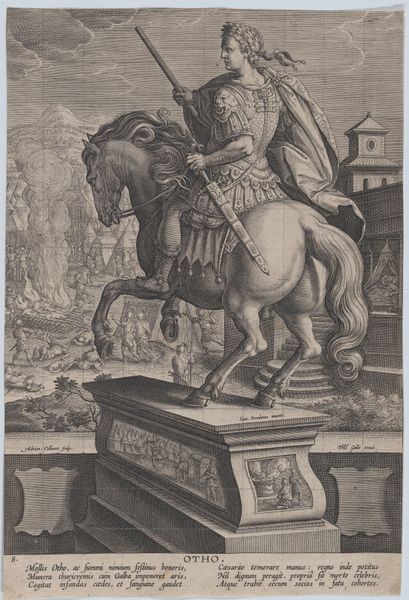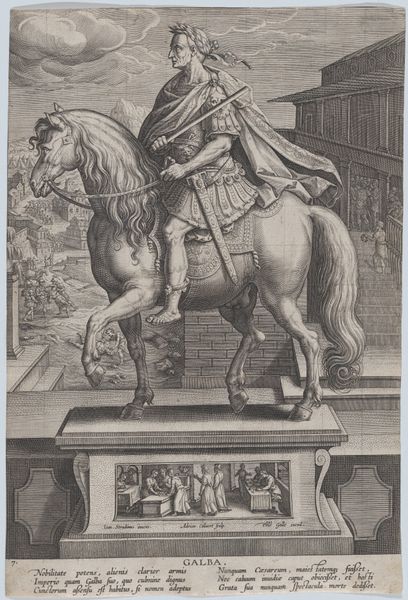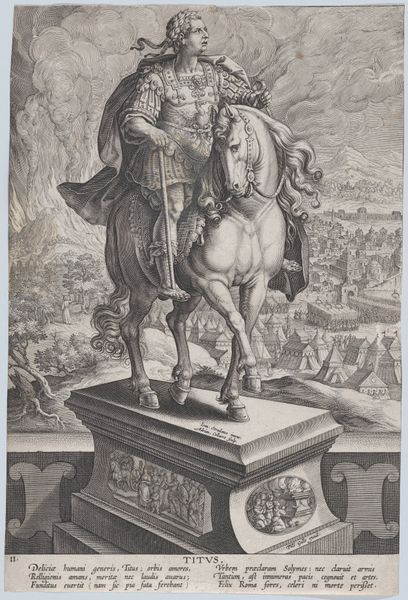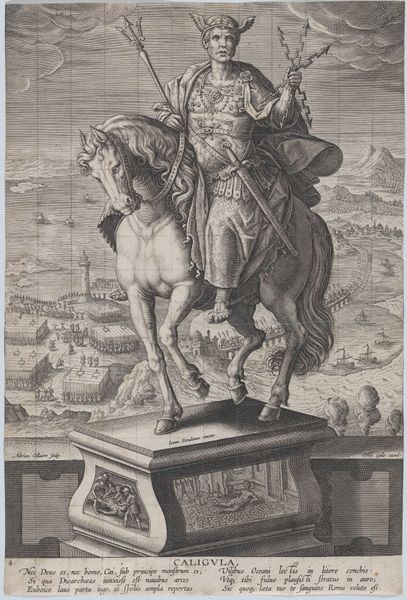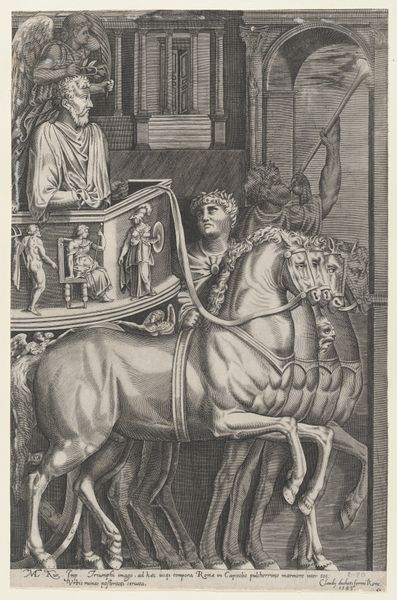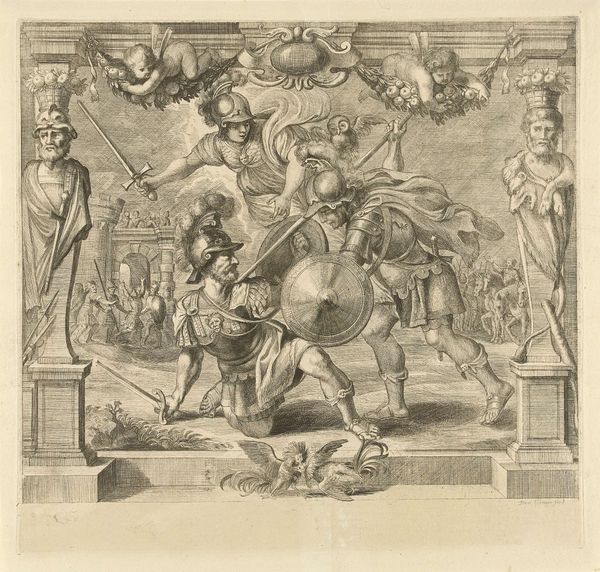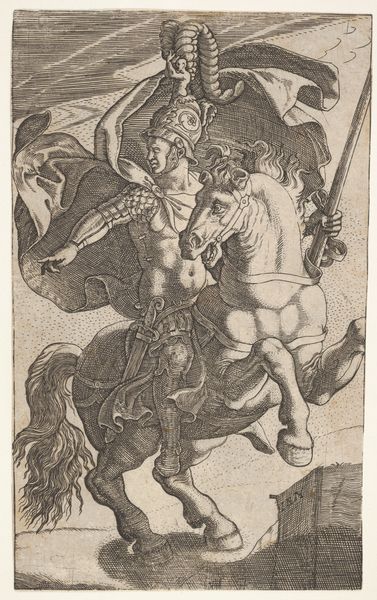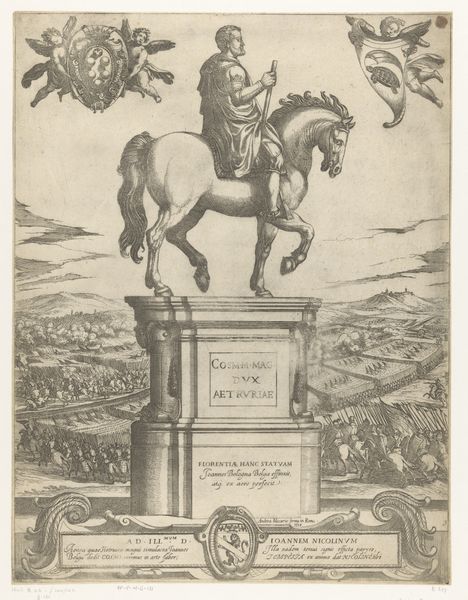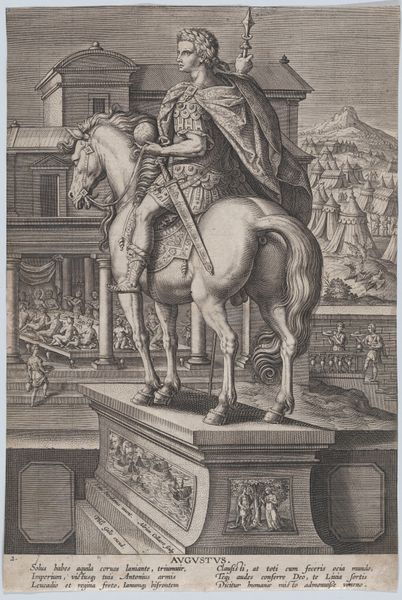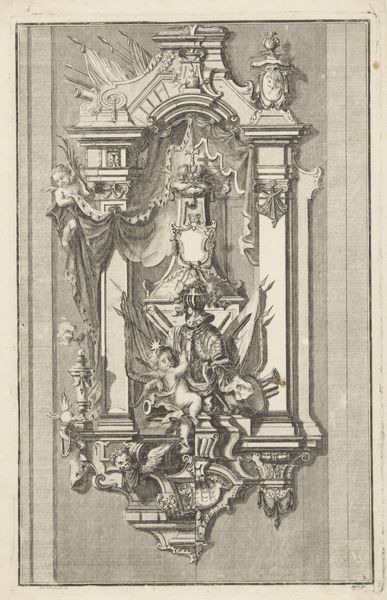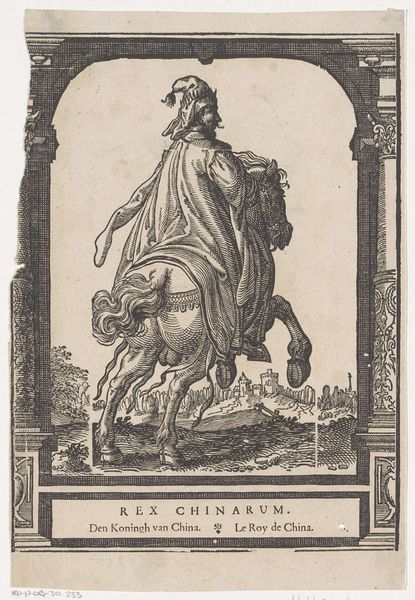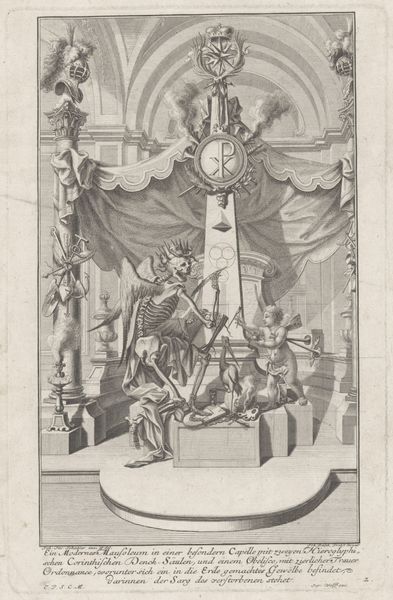
Plate 1: equestrian statue of Julius Caesar, seen from the front, with a scene of a naval battle on pedestal below, from 'Roman Emperors on Horseback' 1582 - 1594
0:00
0:00
drawing, print, engraving, architecture
#
portrait
#
drawing
# print
#
11_renaissance
#
arch
#
horse
#
men
#
history-painting
#
engraving
#
architecture
Dimensions: Sheet (Trimmed): 12 5/8 × 8 9/16 in. (32 × 21.8 cm)
Copyright: Public Domain
Editor: We’re looking at "Plate 1: Equestrian statue of Julius Caesar," a print by Adriaen Collaert from the late 16th century. It's incredibly detailed, with Caesar on horseback above a naval battle scene. The precision of the engraving almost makes it look photographic. I'm struck by the sense of power, both his own and Rome's. What catches your eye in this image? Curator: Power, yes, absolutely! It radiates, doesn't it? Though I see a fragility, too. Consider that Caesar, for all his might, ultimately fell. Collaert, clever fellow, subtly weaves that irony into the grandeur. Notice how the bustling naval battle on the pedestal feels disconnected from the serene, almost melancholy gaze of Caesar above. It’s as if past glories are but echoes now, whispers in the grand halls of history. Almost a theatrical set, wouldn't you agree? A stage for Caesar's legacy. What do you make of the architectural details surrounding him? Editor: I see what you mean about the theatrical staging! The arches and columns create this sense of depth, drawing the eye. And that naval battle below... were those kinds of details typical in depicting powerful figures back then? Curator: Incredibly so. Allegory and symbolism were the bread and butter of Renaissance art, darling. The naval battle isn't just decoration; it’s a symbol of Caesar's conquests, his dominion over land *and* sea. Think of it as a visual resume of sorts, etched in excruciating detail! I wonder... does the precision of the printmaking itself also speak to this idea of control, order? Editor: That's a great point! The very medium emphasizes control and precision, mirroring Caesar's supposed attributes. Looking at this, I'm realizing there’s way more to an equestrian portrait than just a guy on a horse. Curator: Precisely! Art is never just *what* it seems, but *how* it makes us feel, how it speaks to history, to power, to our own fragile place within the grand scheme. Thanks for helping me revisit Caesar! Editor: Thank you for sharing your amazing insights! It completely transformed how I see this artwork.
Comments
No comments
Be the first to comment and join the conversation on the ultimate creative platform.
